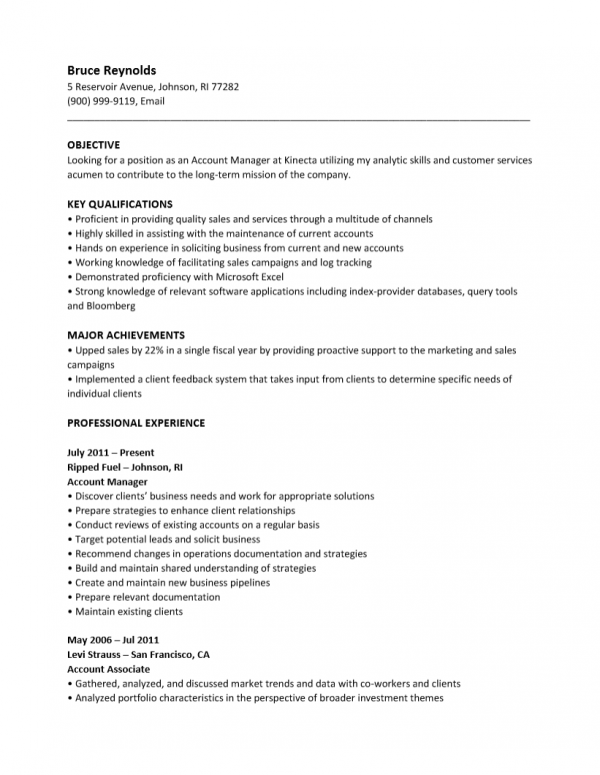
|
Account Manager Resume Template |
The Account Manager Resume Template can be a useful tool for job hunters seeking to create a resume that focuses on account management. A resume template is basically a form with defined headings under which the user must enter content regarding his or her professional life. In addition, there will be a set format which may be used as is or slightly altered (so long as it remains professional). The most useful aspect of a form template is that it is reusable. This will save a job hunter quite a bit of time when they spot an opportunity, if they have already filled out an initial copy. By simply opening the original document and a blank template one may copy and paste static information from the original directly into the appropriate sections of the new form. Since the headings and formatting are consistent between the two this is quickly and easily done. Once finished, an applicant may then compose the content that needs to be unique to that potential employer (i.e. Objective). This will enable a job hunter to respond relatively quickly to an opportunity once it has been spotted and assessed as positive employment opportunity. A well written resume with a professional look will go a long way in aiding a candidate attain an in-person interview, especially if it arrives in a recruiter’s hands ahead of the crowd.
How to Write
Step 1. The first line will need your full name entered. Make this bold or enlarge the font.
Step 2. Enter your current contact information on the lines following your name.
Step 3. The first section where content is required is the Objective section. This should be roughly one to four brief statements explaining your intention for sending the resume and/or how you would function in the position being applied to.
Step 4. The Key Qualifications section will contain a list of the skills which will fulfill the requirements stated in the job posting as well as for that position. This section should support the previous section.
Step 5. The next section, “Major Achievements,” has a similar purpose however will specifically contain a list of your accomplishments or any notoriety you have earned.
Step 6. The heart of most resumes is the “Professional Experience” section where an applicant lists the employment history. For each position held you must report the time period you occupied it, the name and location of the employer, and the title you held. Follow this with an organized list of your duties there. The entire list should be place in descending date order by time period employed.
Step 7. In “Education,” enter the name, city and state, degree earned, and GPA (if this is less than impressive, enter the year of graduation).


